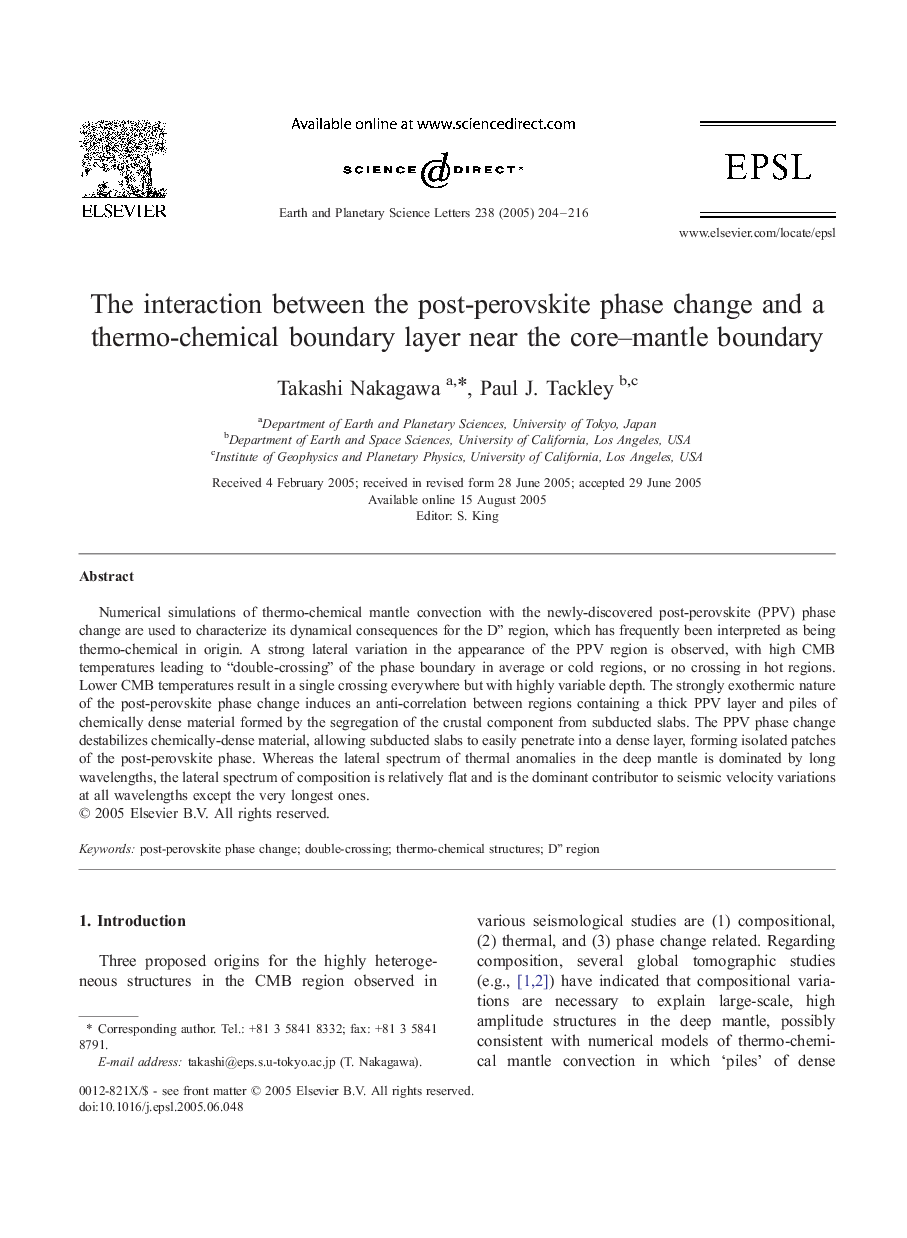| Article ID | Journal | Published Year | Pages | File Type |
|---|---|---|---|---|
| 9522097 | Earth and Planetary Science Letters | 2005 | 13 Pages |
Abstract
Numerical simulations of thermo-chemical mantle convection with the newly-discovered post-perovskite (PPV) phase change are used to characterize its dynamical consequences for the D” region, which has frequently been interpreted as being thermo-chemical in origin. A strong lateral variation in the appearance of the PPV region is observed, with high CMB temperatures leading to “double-crossing” of the phase boundary in average or cold regions, or no crossing in hot regions. Lower CMB temperatures result in a single crossing everywhere but with highly variable depth. The strongly exothermic nature of the post-perovskite phase change induces an anti-correlation between regions containing a thick PPV layer and piles of chemically dense material formed by the segregation of the crustal component from subducted slabs. The PPV phase change destabilizes chemically-dense material, allowing subducted slabs to easily penetrate into a dense layer, forming isolated patches of the post-perovskite phase. Whereas the lateral spectrum of thermal anomalies in the deep mantle is dominated by long wavelengths, the lateral spectrum of composition is relatively flat and is the dominant contributor to seismic velocity variations at all wavelengths except the very longest ones.
Related Topics
Physical Sciences and Engineering
Earth and Planetary Sciences
Earth and Planetary Sciences (General)
Authors
Takashi Nakagawa, Paul J. Tackley,
